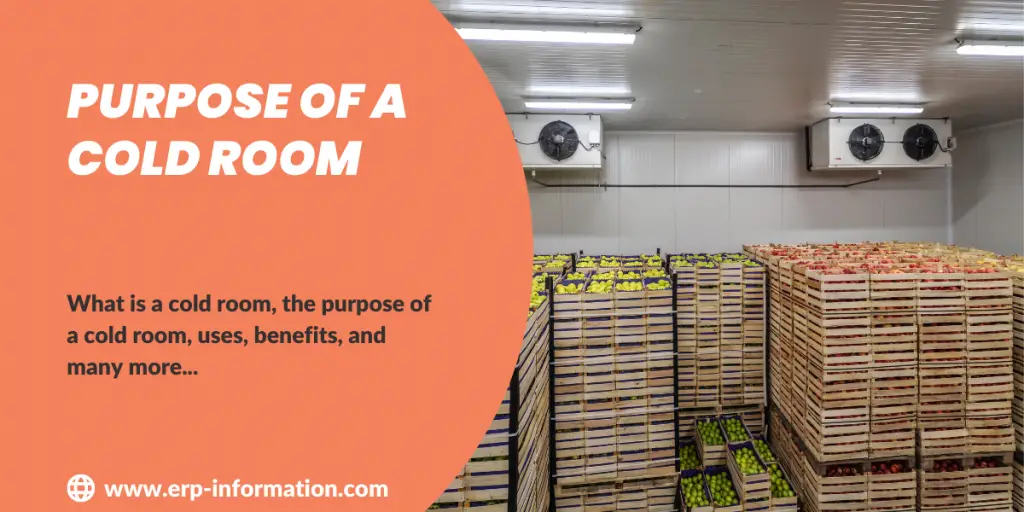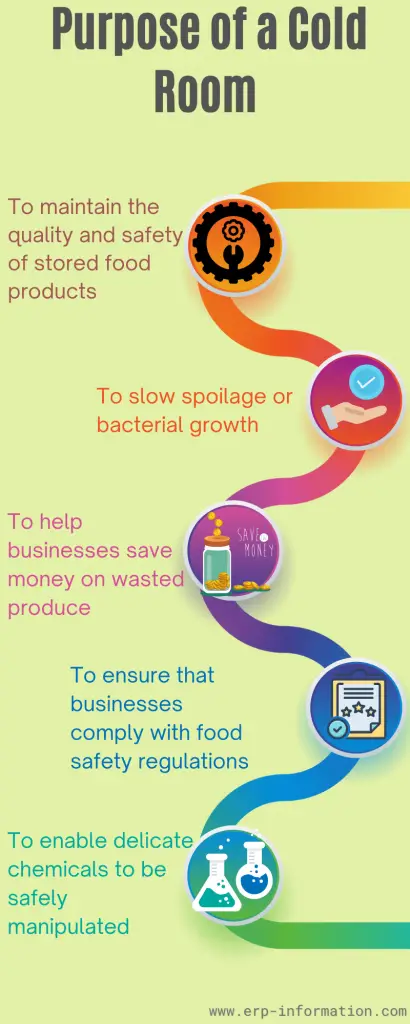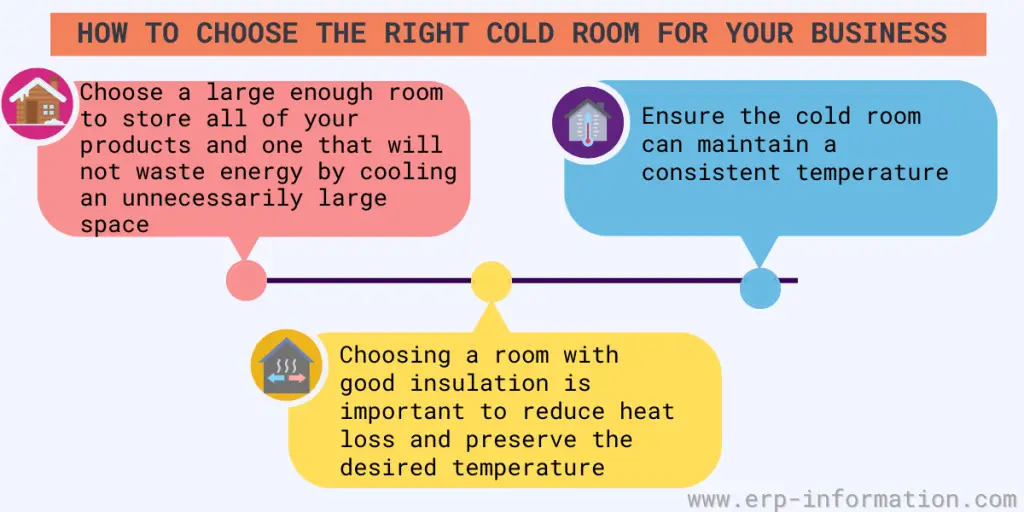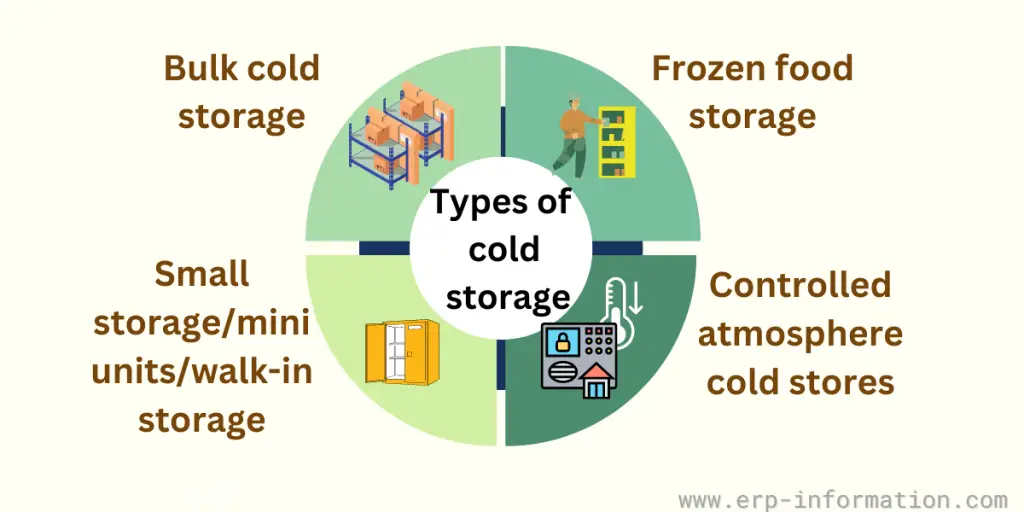Do you know what a cold room is? And the purpose of a cold room? If not, we are here to answer your question. A cold room is a room that is used to store food at a low temperature.
This type of cold room storage is important for businesses that deal with perishable items, like meat or dairy products. Without a cold room, these businesses would have to waste money on food that goes bad.
This blog post will discuss the purpose of a cold room and the benefits of using them!
What is a cold room?
A cold room is a refrigerated space for storing food, beverages, and other perishables at low temperatures. Keeping a room at the perfect temperature is essential.
That’s why insulated walls, flooring, and ceilings are so important in cold rooms; they work to maintain an ideal climate while keeping energy costs low! They are often found in restaurants, supermarkets, warehouses, chemical storage, some houses, and processing facilities.
They are also great for preserving wine and cheese, as they can maintain a consistent temperature.
What is the purpose of a cold room?
Maintaining quality and safety
The purpose of a cold room is to maintain the quality and safety of stored food products by keeping them at low temperatures.
Cold room storage is important to ensure food products are stored at optimal temperatures.
- The food items can be kept fresh and safe for as long as possible by maintaining a cool atmosphere. For example, you must store frozen foods such as ice cream, fruits, and vegetables in temperatures far lower than the recommended fridge level of 4°C.
- Cold rooms are designed to reach sub-zero temperatures, which preserve the texture, flavor, and nutritional value of these foods for an extended period.
- Additionally, many hazardous microorganisms cannot survive in colder temperatures, further increasing food safety by dramatically reducing spoilage caused by bacteria growth.
- In this way, the purpose of cold rooms is clear: keeping food products safe and preserved during storage.
Slowing spoilage or bacterial growth
This helps slow spoilage or bacterial growth, ensuring that items remain fresh for longer.
- A cold room is a purpose-built, thoroughly insulated space designed to maintain cooler temperatures than the environment outside. This helps slow spoilage or bacterial growth so that items stored inside this cooler environment remain fresh for a long period.
- Products such as food, flowers, and drinks are stored in a cold room to extend their shelf life.
- Thanks to modern technology, these purpose-built chambers can be temperature regulated for delicate goods, with temperature readings monitored closely.
- Cold rooms offer commercial enterprises an economical and practical way of extending the storage life of products at a fraction of the cost of traditional storage methods.
Helping businesses money on wasted produce
Cold rooms also help businesses save money on wasted produce that has gone bad due to temperature fluctuation.
- Cold rooms play a purposeful role in storing fresh produce and other items that must be maintained at a certain temperature. Cold rooms are invaluable for businesses investing in agriculture, restaurants, catering, or other industries with perishable goods.
- Without a properly regulated cold room, businesses can experience massive losses due to spoiled goods due to temperature fluctuation.
- By investing in and utilizing the purpose of a cold room, not only is precious business inventory saved, but many instances of financial suffering are also prevented.
Complying with food safety regulations
Having a cold room ensures that businesses comply with food safety regulations.
- Cold rooms are essential tools for businesses that handle food products to ensure compliance with food safety regulations.
- For Restaurants and delicatessens to caterers and other food service industries, a cold room is purpose-designed to store temperature-sensitive items, such as pre-cooked items, fresh produce, dairy products, and more.
- By keeping the internal temperature of the cold room at optimal operating levels – typically between 0°C and 4°C – any perishables stored inside can be kept until needed in perfect condition.
- Cold rooms help businesses comply with food safety regulations by providing them with an efficient way of storing goods while maintaining their integrity.
Enabling delicate chemicals to be safely manipulated
Temperature-controlled rooms are essential for engineering and chemical processes, as they enable delicate chemicals to be safely manipulated without the risk of undesired reactions. Such as drugs, medicines, human organs and bodies, biological goods, etc
- Temperature-controlled rooms, also called cold rooms, are indispensable in engineering and chemical processes because they maintain a consistent and safe temperature for delicate chemicals.
- Utilizing a temperature-controlled environment can manipulate the materials without triggering adverse changes from extreme temperatures.
- In addition to offering great control over the external environment, these secure spaces decrease the risk of contamination by keeping external elements out. This is advantageous for special experiments that require careful handling of sensitive chemicals or ingredients.
- With the presence of these rooms, engineers and chemists alike can safely propagate their projects without any negative consequences due to extreme temperatures.
What are the benefits of using a cold room?
There are numerous benefits to using a cold room. These include:
Reduced spoilage and waste
Storing products at low temperatures reduces spoilage and keeps them fresher for longer, reducing food waste.
Improved food safety and quality
Keeping products at a safe temperature helps to reduce the risk of contamination and preserve flavor, texture, and nutritional value.
Increased productivity
Storing perishables in cold rooms frees up time for staff to focus on other tasks rather than constantly checking temperatures.
Reduced energy costs
Cold rooms use less energy than larger commercial refrigeration units, saving businesses money in the long run.
Adjustable and customizable in sizes
It can be customized according to your need and can alter the size of the room and temperature.
How to choose the right cold room for your business?
When selecting a cold room for your business, there are several factors to consider, such as size, temperature range, and insulation.
- It is important to choose a large enough room to store all of your products and one that will not waste energy by cooling an unnecessarily large space.
- Additionally, you should ensure the cold room can maintain a consistent temperature.
- Finally, choosing a room with good insulation is important to reduce heat loss and preserve the desired temperature.
What is the purpose of a cold room in a house?
A cold room in the house can be used for many purposes.
- It can store food products at ideal low temperatures, keeping them fresher for longer.
- It can be used to store wine and other beverages at their ideal temperatures.
- It can also be used as an additional refrigerator or freezer if more storage space is needed to store vegetables, fruits, meat, milk products, etc.
Types of cold storage
- Bulk cold storage
- Frozen food storage
- Small storage/mini units/walk-in storage
- Controlled atmosphere cold stores
Advantages of cold room
- Nutrients, minerals, and vitamins are maintained for a long time as fresh products.
- Perishable items can be used with a fresh feel
- Human organs can be preserved and used.
Disadvantages of cold room
- Not suitable for all products
- Need maintenance
- Power supply or backup
Refrigerating warehousing and logistic providers
- United States cold storage, inc
- Lineage Logistics
- Americold Logistics
- Swire group[i]
- Interstate warehousing
- Versa cold Logistic services
- VX cold chain Logistics
- Hanson Logistics
- Conestoga cold storage
- RLS Logistics
- Burris Logistics
- Magnavale LTD
FAQs
How to maintain cold storage?
Keeping your cold room in top condition is essential. To ensure optimal temperature control, start by calibrating the environment before keeping it cool with a full load.
Don’t forget to wipe down surfaces like the evaporator and fins for maximum effectiveness. Also, checking that all valves are working properly—is a must-do step when maintaining quality conditions inside your storage space.
Conclusion
A cold room can be an invaluable addition to any business that deals with perishable items or needs extra refrigeration or freezing capacity. When choosing and maintaining a cold room, it is important to consider factors such as size, temperature range, and insulation to correct.
Types of cold rooms can be selected and utilized to maximize efficiency. However, regular room and cooling system maintenance are critical for preserving food safety and quality. With the right cold room, businesses can ensure that their products remain fresh and safe for their customers.
We hope this article has helped you understand what a cold room is, the purpose of a cold room, its uses, and many more.



